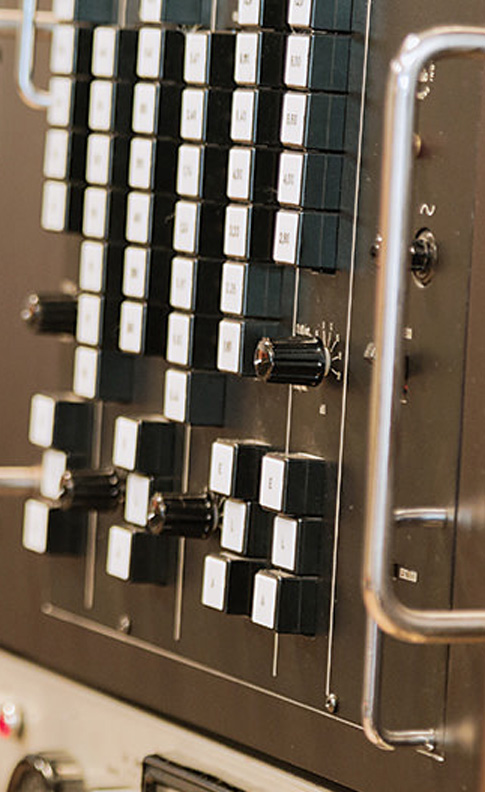Drobo is a US-based company specializing in data storage solutions. More than a drive enclosure, the 5N2 provides data protection, web-based file management, and scalable capacity. My photography and videography colleagues rely on Drobo. When other creatives agree on a reliable tool, it's a good hint we need to investigate.
Full disclosure, I almost chose Drobo's chief competitor who has much better performance benchmarks, but chatrooms and reviewers all harped on about how much easier Drobo is to install, use, and maintain. Now most audio engineers are not afraid of computers, so why did I pick the "easier to use" Drobo over the "faster performance" competition? The answer is simple. Time is money. In any given week I'm likely to encounter a security patch update from Windows or OSX that will break one of my drivers, plug-ins, or dongles. Our clients have deadlines, and this thing just works. Rather than list all of the specifications, I'll go directly to ease of use, and explain using real-world examples.
First, choose the best connectivity for your studio. Presently Drobo has about a dozen different solutions. Select the connection protocol you need (USB-C, Thunderbolt-2, USB 3, etc.). For example, an OSX studio may want a different solution than a Windows setup. I tested the 5-bay 5N2, which connects via Ethernet.
Unless you buy a specific bundle, Drobo units ship without drives. Reader, please do not buy a Drobo unit, then get mad that the enclosure is empty – and don't write to Larry and whine. I'm telling you now! With prices fluctuating and implementation needs differing, this is best for all involved. Determine how many TB of storage you require. Open the Capacity Calculator tool on the Drobo website, select your model, then add your drives (represented by icons ranging from 1 TB up to 14 TB). As you add drives (they must be the same capacity), the tool calculates capacity. Drobo defaults to redundant storage, which protects files in the event one drive fails. If you fear two drives may fail, Disk Redundancy is also an option, albeit with lower capacity. I need at least 18 TB of space, so I chose three 10 TB drives. My configuration yields: raw capacity 27 TB, actual data storage 18 TB, no expansion (although two drives can be added in the future). Protection: 9 TB, and Overhead: 32 GB. Drobo tells me this will hold 4,571,429 MP3 files. Great.
Next, choose the best class of drive for your situation. Check the Drive by Application chart to compare: DAS, NAS, eSATA, all the way to consumer SSD. Why? Different drives are optimized for specific tasks: backup, file serving, media editing, or database work. I chose back up, but tracking engineers should know video houses edit projects using Drobo as the media drive! Finally, a hidden compartment can accept an SDD to manage cache data. I never needed this option, but the provision exists.
Set up could not be easier. Go to Drobo's web and launch the set up guide. It visually presents each step, directing when to add drives, connect data cables, power up the unit, and even installs the dashboard software. It took ten times longer to write this review than it did to set up the Drobo. If you get stuck, phone support is available.
In use, the Drobo appears like a regular drive to both Windows and OSX machines. I use GoodSync [Tape Op #115] to manage my backups, but that's not strictly required. Although I didn't add the SSD for caching, I did deploy both Gigabit Ethernet ports, which gave approximately twice the read/write performance of a single port. A good back up strategy includes an offsite copy. If you don't trust the cloud, a second 5N2 can be purchased to automatically make an offsite mirror. Drobo can seamlessly replicate data to another 5N2, ensuring file availability in case of disaster.
I didn't test this, but the myDrobo software allows end-to-end secure access to services on your Drobo from the internet. With a user-selected mydrobo.com address, you may enable DroboAccess, Koken, and WordPress to be accessed remotely in a secure fashion. DroboPix serves secure and automatic uploads of mobile photos and videos. (I told you photo and video people loved Drobo). If you need to post reference mixes for your client, this could be a great option without having to pay for a dedicated service.
If a drive happens to fail, Drobo will automatically re-layout the data to return to a protected state without disruption. They call this BeyondRAID rather than specify a traditional RAID level. More details are available on the site for the technically inquisitive. The company doesn't brag about this, but the unit has a built-in battery backup that protects all data in memory or cache. If power fails, the unit stays alive long enough for the data to be written to disk, ensuring your critical information is safe. The onboard battery recharges itself and is designed to last for the life of the product.
My only concerns with the 5N2 are that when the first time you access the unit, it takes a second or two to serve a directory. To be fair, the network attached storage unit this Drobo replaced took as long as 25 seconds to connect, so I'm being picky. Also, while the Drobo is not noisy, per se, I can hear it in my mastering suite – so off to the machine closet it will go. But that's really all folks. This box is sweet. The 5N2's feature set and performance would have been a studio fantasy only a decade ago, and similar functions would have cost as much as a car. Drobo is a reliable, scalable, configurable tool that can serve as the file backbone of your studio. I do hope that they realize how many audio engineers love the product and maybe feature some of us on their website in the future.




_disp_horizontal_bw.jpg)